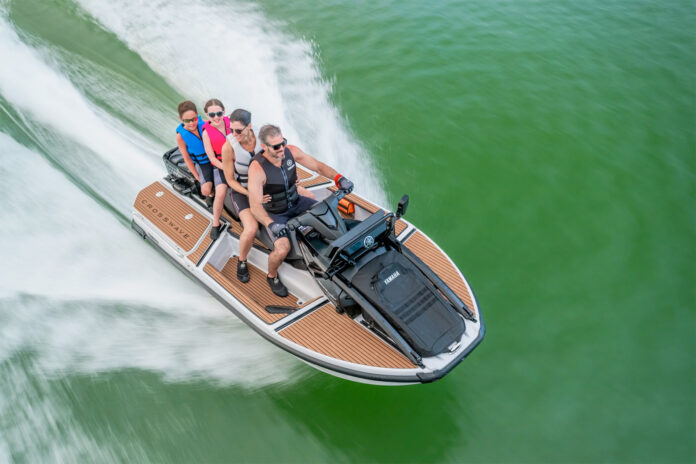Yamaha Watercraft has unveiled a new type of personal watercraft that sits between two categories traditionally kept apart: nimble jet skis and larger jet-powered sport boats. Dubbed the CrossWave, this new model is part of Yamaha’s WaveRunner family but expands the concept in both form and function. Still in prototype stage, the CrossWave is expected to launch in the U.S. by Spring 2026 and aims to establish a stronger foothold in the emerging PWC Adventure segment.
A hybrid design that breaks the mold
At first glance, the CrossWave doesn’t look like a typical PWC. It resembles a traditional WaveRunner embedded into the center of a large, flat, 360-degree wraparound deck. The layout offers both the visceral riding position and handlebar control of a jet ski along with the space and functionality of a mini-boat. The design lends itself to utility, exploration, and long-distance excursions on water.
Yamaha describes the CrossWave as a new category within its watercraft lineup — “part utility vessel, part explorer and 100% Yamaha,” according to Bryan Seti, general manager of Yamaha Watercraft. He adds, “This isn’t about going faster or carving harder. The CrossWave is about going farther and doing more — with the space, flexibility and purpose that a growing segment of the PWC industry has been waiting for.”
An adventure-oriented platform
While Sea-Doo’s Explorer Pro series could be considered a competitor, Yamaha takes the concept a step further. The CrossWave is not just suited for day trips or high-speed rides. Its design encourages extended expeditions — with enough space for gear, supplies, and up to four passengers. Users could feasibly pack camping equipment and set off for a multi-day adventure exploring remote shorelines, islands, or river inlets.
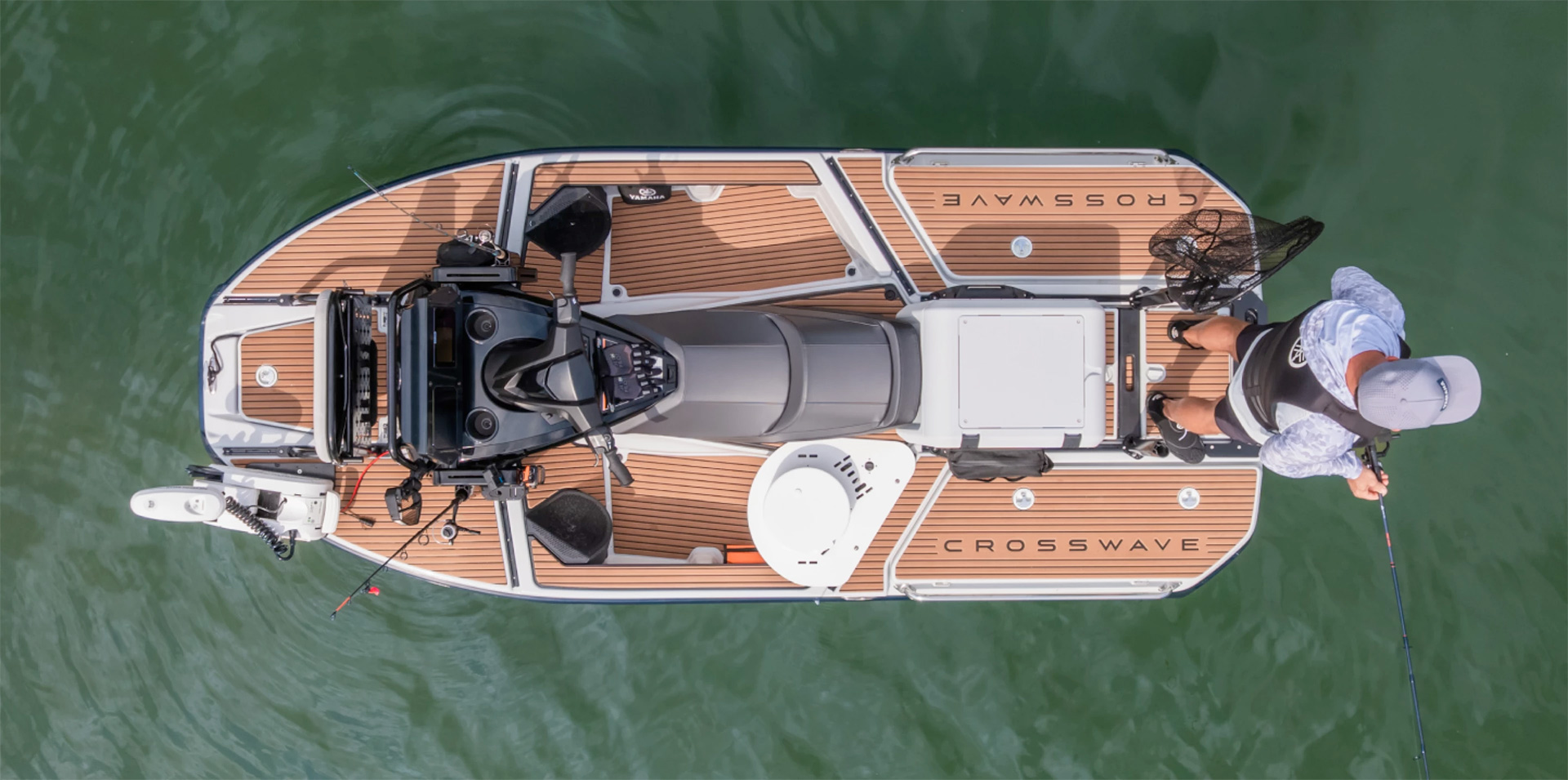
The 360-degree deck is a key feature that enhances the CrossWave’s usability. It offers more standing and walking space than traditional PWCs and significantly boosts stability while on water. The craft measures 13 feet (4 meters) in length and adds nearly 2 feet (61 cm) over the WaveRunner FX luxury series, as well as 1.5 feet (46 cm) of additional width. Yamaha says it is the first personal watercraft in the industry to feature such a wraparound deck.
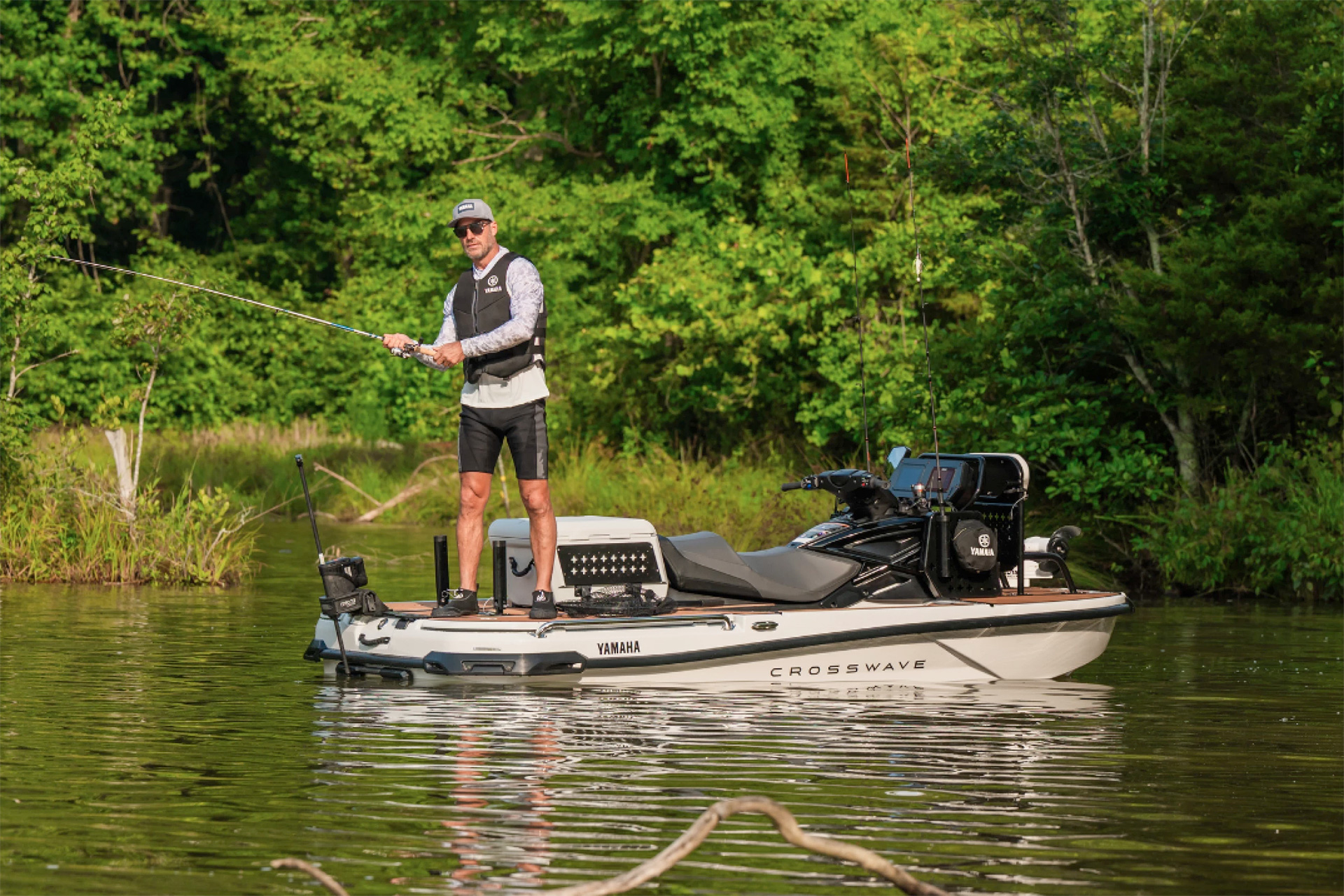
While there have been past attempts at PWC-boat hybrids, including one based on a Yamaha WaveRunner over 15 years ago, those designs typically lacked a fully usable, flat deck. One exception included a narrower deck sunken below the gunwales, unlike the CrossWave’s open, swimming-platform-style arrangement.
Features geared for distance and utility
The cockpit layout of the CrossWave includes a floating instrument panel with two 7-inch screens — one is a color touchscreen, and the other is a Simrad NSX chart plotter and fish finder. These navigation and fishing aids further emphasize its role as an all-day or multi-day explorer rather than a short-hop cruiser.
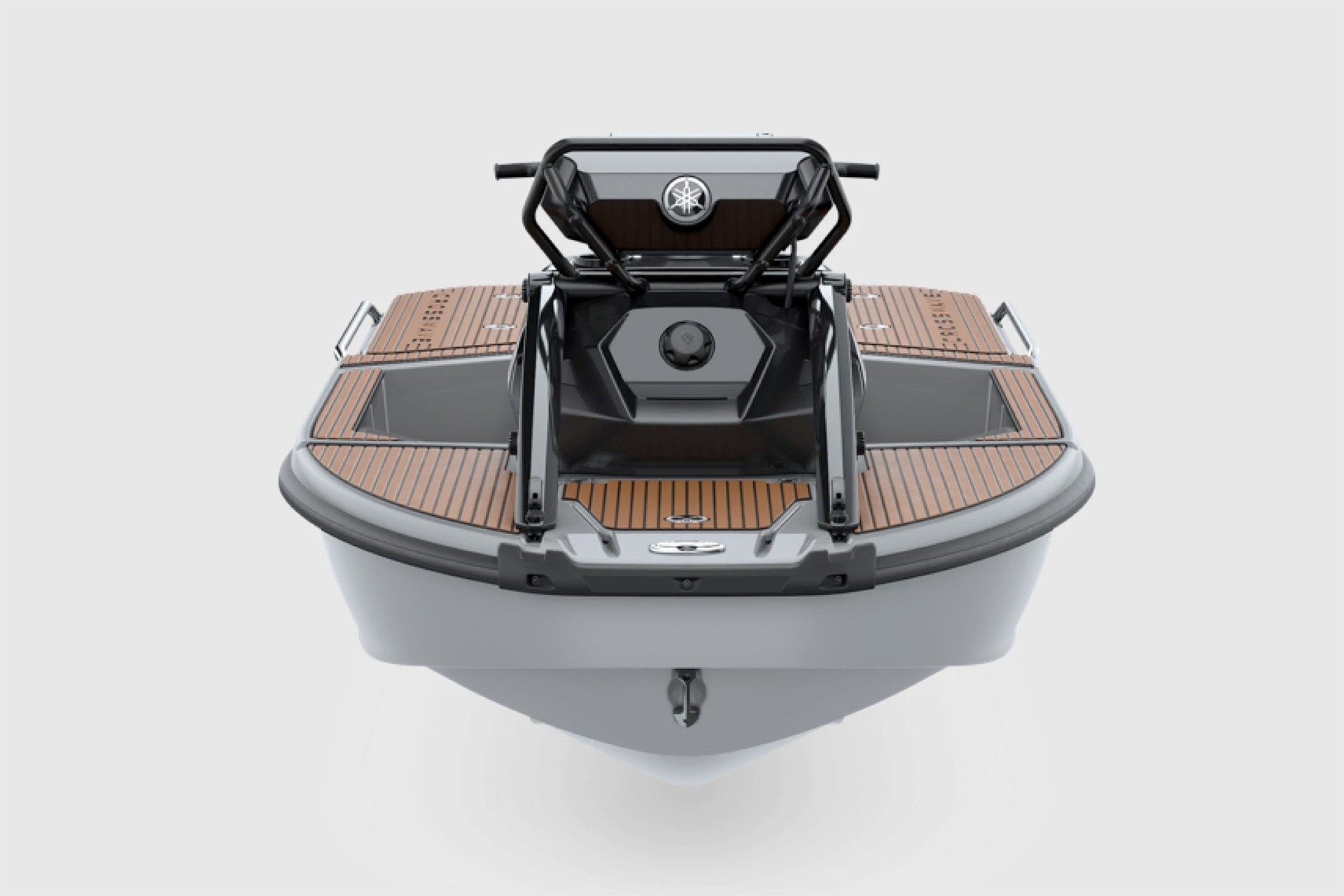
Powering the CrossWave is a 1.9-liter high-output engine that Yamaha claims is the largest displacement engine in the PWC market. It is paired with a 100-liter fuel tank, providing extended range for long-distance water travel. Yamaha says the engine promises smooth acceleration and solid top-end speed, even if performance isn’t the core selling point.
For fishing or watersports enthusiasts, the modular design includes T-track systems around much of the deck — a common fixture in camper van builds and overlanding rigs. These allow users to attach a wide range of accessories such as rod holders, trolling motor brackets, or shallow water anchors. The CrossWave also offers 310 liters of dedicated storage space across various compartments, including a rod compartment, bow anchor locker, and two stern in-hull sections.
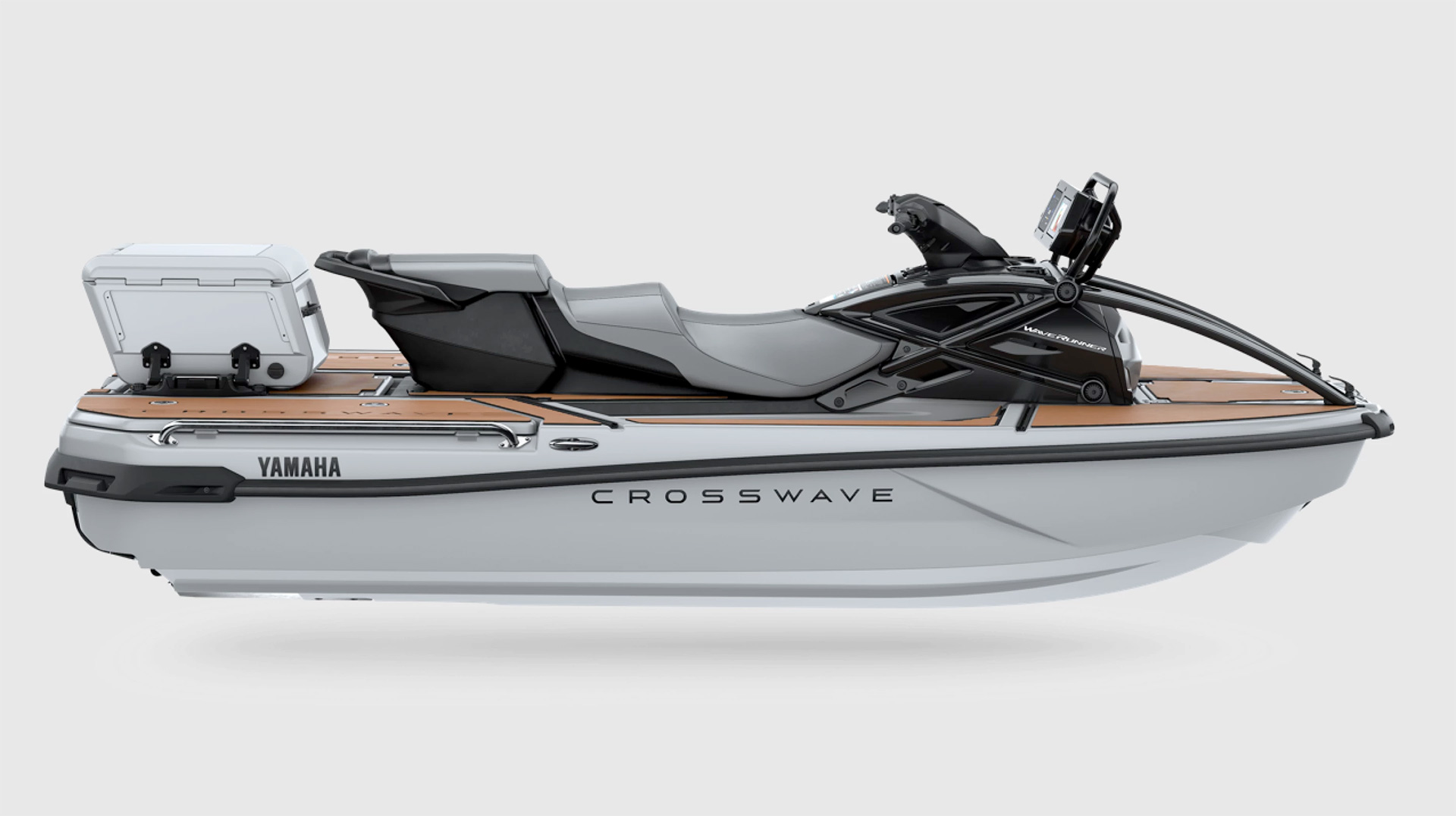
Seating for four, but customizable for fewer
One of the more notable features is the CrossWave’s seating layout. It accommodates up to four riders seated one behind the other on two twin saddles, keeping with the WaveRunner DNA. For trips with fewer passengers, the rear seat can be removed to provide more cargo space — an advantage when carrying gear for solo or duo excursions.
Despite not being designed for aggressive cornering or racing-level handling, the CrossWave’s low-centered seating and familiar PWC handlebars ensure a more tactile and engaging ride experience compared to conventional boats.
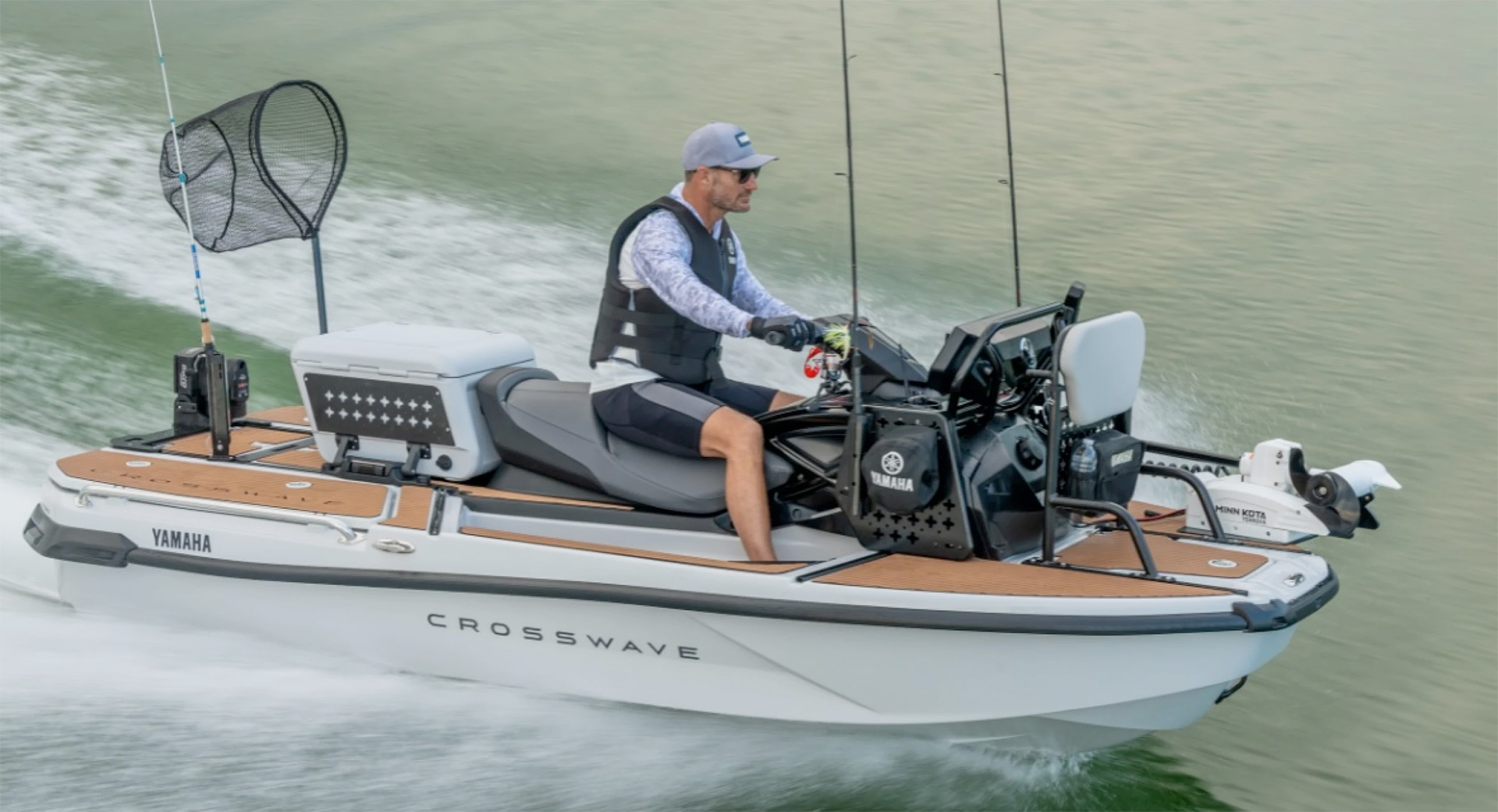
A glimpse at availability and pricing expectations
Although Yamaha has not released final pricing for the CrossWave, the prototype was formally introduced in 2024 and is planned for a Spring 2026 U.S. launch. Yamaha’s current WaveRunner lineup tops out at a base price of $22,199, while the entry-level models in its jet boat lineup begin at $39,999. Given this gap, it’s expected that the CrossWave will be priced somewhere in between, although specifics are not yet confirmed.
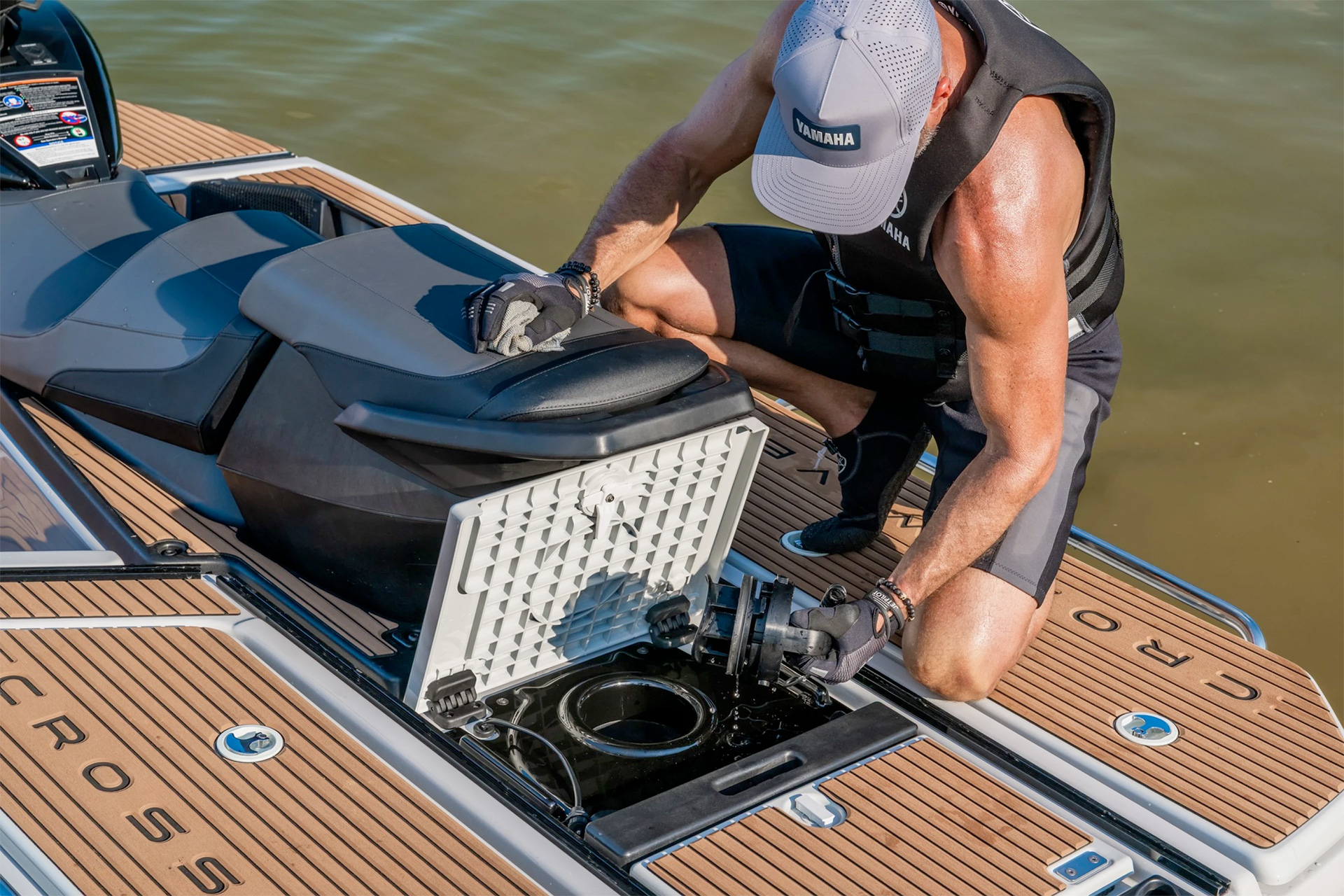
Yamaha intends to sell the CrossWave in just one fully-equipped trim. Standard features will include 8-inch Bluetooth speakers integrated into the footwells, prewiring for a Group 24 deep-cycle marine battery with an on/off switch, a 55-inch cooler, and a marine trailer. Rather than offering multiple trim levels, Yamaha will encourage buyers to personalize their CrossWave through an à la carte catalog of accessories — from fishing components to storage upgrades.
The watercraft will be available through Yamaha’s nationwide network of WaveRunner dealers upon launch.
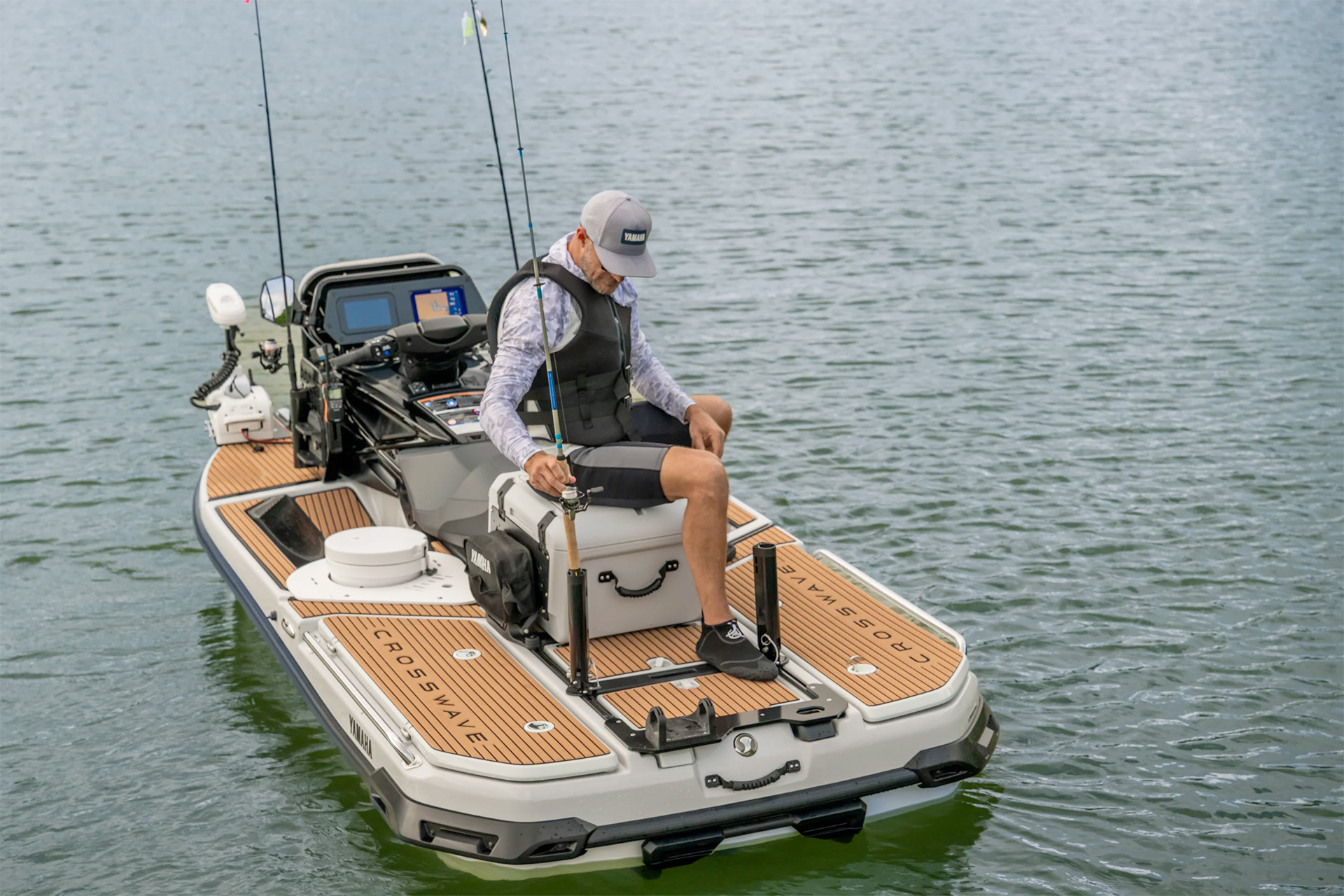
Source: Yamaha

